
Public gets a look at progress on Northampton Resilience Hub
NORTHAMPTON — The public got an up-close look at the future Community Resilience Hub last week when officials opened the downtown building currently under renovation for public viewing. A rendering of what the exterior of the former First Baptist...
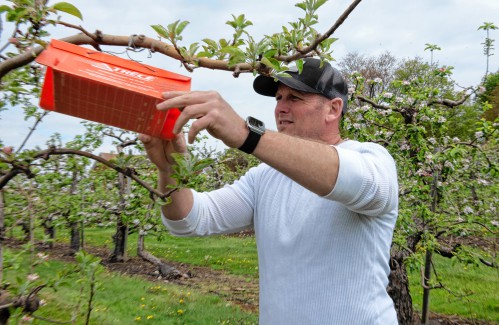
Building agricultural resiliency: During tour with Senate leaders, Oliveira shows off research at UMass Cold Springs Orchard in Belchertown
BELCHERTOWN — Among UMass Cold Springs Orchard’s 35 acres of apple trees hang little orange tents at the top of the trees that, despite the blazing color, are discretely managing pesky moths.These prism-shaped moth traps release pheromones to attract...
Most Read
 ‘Home away from home’: North Amherst Library officially dedicated, as anonymous donor of $1.7M revealed
‘Home away from home’: North Amherst Library officially dedicated, as anonymous donor of $1.7M revealed
 ‘We can just be who we are’: Thousands show support for LGBTQ community at Hampshire Pride
‘We can just be who we are’: Thousands show support for LGBTQ community at Hampshire Pride
 South Hadley man killed in I-91 crash
South Hadley man killed in I-91 crash
 Retired superintendent to lead Hampshire Regional Schools on interim basis while search for permanent boss continues
Retired superintendent to lead Hampshire Regional Schools on interim basis while search for permanent boss continues
 A Waterfront revival: Two years after buying closed tavern, Holyoke couple set to open new event venue
A Waterfront revival: Two years after buying closed tavern, Holyoke couple set to open new event venue
 Proposed Hatfield pickleball/tennis building raising eyebrows
Proposed Hatfield pickleball/tennis building raising eyebrows
Editors Picks
 A Look Back: May 7
A Look Back: May 7
 Easthampton author Emily Nagoski has done the research: It’s OK to love your body
Easthampton author Emily Nagoski has done the research: It’s OK to love your body
 Earth Matters: Honoring a local hero: After 40 years, Hitchcock Center bids farewell to educator and creative leader, Colleen Kelley
Earth Matters: Honoring a local hero: After 40 years, Hitchcock Center bids farewell to educator and creative leader, Colleen Kelley
 The Beat Goes On: A trombone celebration in Holyoke, Lord Russ shifts gears, and the Hampshire Young People’s Chorus turns 25
The Beat Goes On: A trombone celebration in Holyoke, Lord Russ shifts gears, and the Hampshire Young People’s Chorus turns 25
Sports
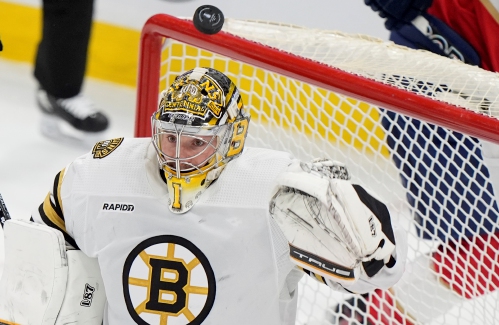
Swayman stops 38 shots, Bruins roll past Panthers 5-1 for 1-0 series lead
Swayman stops 38 shots, Bruins roll past Panthers 5-1 for 1-0 series leadEds: UPDATES: Updates Media.SUNRISE, Fla. (AP) — Jeremy Swayman stopped 38 shots, Brandon Carlo scored a goal just a few hours after his wife gave birth to their son and the...
Opinion

My Turn: Gaza and lies
Say, “I don’t believe the numbers.” Insist “It’s complicated.”Say, “There is no alternative. Hamas has called for the destruction of the state of Israel and thus, Hamas must be destroyed.” Disregard the Israeli leaders who have called for the...
 Guest columnist Mariel E. Addis: Pride and prejudice
Guest columnist Mariel E. Addis: Pride and prejudice
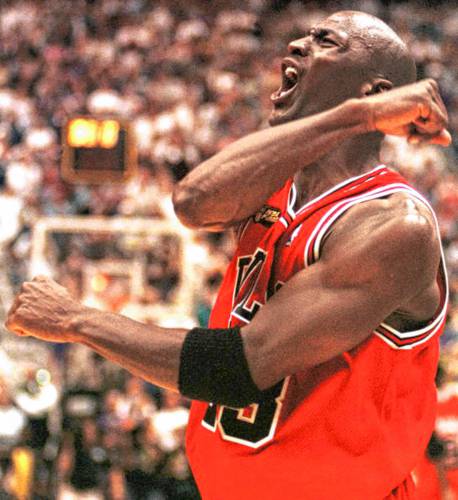 Guest columnist Gene Stamell: We know what we know
Guest columnist Gene Stamell: We know what we know
 Jennifer Dieringer: Budget must serve whole city
Jennifer Dieringer: Budget must serve whole city
 Ken Rosenthal: Time to change direction on Jones Library
Ken Rosenthal: Time to change direction on Jones Library

Business

Area property deed transfers, May 2
AMHERST Faheem Ibrahim Lt and Faheem Ibrahim to Nan Zhao and Zhihong Ni, 16 Arbor Way, $738,000 Richard B. Spurgin to Yg Pleasant LLC, East Pleasant Street, Lot 1, $218,000 Richard B. Spurgin to Yg Pleasant LLC, East Pleasant Street, Lot 2,...
Arts & Life

Valley Bounty: Delivering local food onto students’ plates: Marty’s Local connects farms to businesses
Nick Martinelli, CEO of Marty’s Local, began his career with a stint at the Farm School in Athol, hoping to learn how he might participate in the local agricultural economy. While conducting market research in 2015, he recognized there was a lot of...
Obituaries
 Eli Knapp Abrams
Eli Knapp Abrams
Florence, MA - Eli Knapp Abrams, of Florence Massachusetts, passed away suddenly on Monday, April 22nd, 2024 in Goshen, MA. Eli was born in Beverly, MA on March 19th, 2003. He is the cherished son of Jennifer and Maury Abrams, and belov... remainder of obit for Eli Knapp Abrams
 Sandy A. Bell
Sandy A. Bell
Easthampton, MA - Sandra A. Bell, 77, of Easthampton passed away peacefully on May 2, 2024 at Cooley Dickinson Hospital after a brief illness surrounded by her family. Sandy was born October 28, 1946, in Fall River, MA to John and V... remainder of obit for Sandy A. Bell
 Harold Portner
Harold Portner
Amherst, MA - It is with great sadness that we announce the passing of Harold (Hal) Portner, 93, of Amherst, MA on April 29, 2024. Hal was born in Hartford, CT on Dec. 5, 1930. Hal is predeceased by his parents Abraham and Leah (Specto... remainder of obit for Harold Portner
 Juanita Canty
Juanita Canty
Hadley , MA - Juanita a proud Cuban and Sagittarian self-taught antiques dealer beloved wife of over 40 years mother, grandmother, great grandmother and to all a loyal and generous friend. She completed her earthly journey on April 26, ... remainder of obit for Juanita Canty

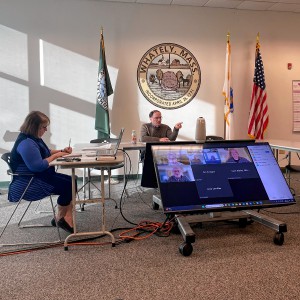 Easthampton native named Whately town administrator
Easthampton native named Whately town administrator
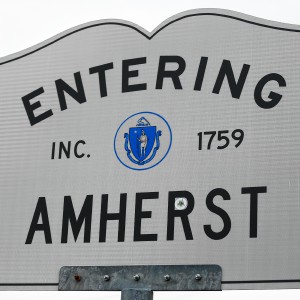 Police respond to alcohol-fueled incidents in Amherst
Police respond to alcohol-fueled incidents in Amherst
 Former Easthampton firefighter to serve 8 months for filming colleagues in women’s locker room
Former Easthampton firefighter to serve 8 months for filming colleagues in women’s locker room
 Bringing the Haitian vibe: Haitian Multicultural Day at Hopkins features Boston dance troupe
Bringing the Haitian vibe: Haitian Multicultural Day at Hopkins features Boston dance troupe
 Rose wins reelection in Worthington
Rose wins reelection in Worthington
 Funding will limit ARHS track/field makeover to cheapest option
Funding will limit ARHS track/field makeover to cheapest option
 Northampton bans auto dealerships near downtown; zone change won’t affect Volvo operation on King Street
Northampton bans auto dealerships near downtown; zone change won’t affect Volvo operation on King Street
 Guest column: Serving educational needs shouldn’t be ‘aspirational’
Guest column: Serving educational needs shouldn’t be ‘aspirational’
 High schools: Belchertown lacrosse seniors Paige Magner and Maddy LePage celebrate milestones
High schools: Belchertown lacrosse seniors Paige Magner and Maddy LePage celebrate milestones Track & field: Northampton, Amherst split final dual meets of the season (PHOTOS)
Track & field: Northampton, Amherst split final dual meets of the season (PHOTOS)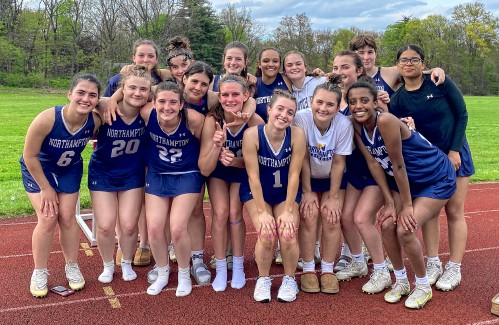 Girls lacrosse: Northampton rallies from 5-goal deficit to knock off Amherst 12-11
Girls lacrosse: Northampton rallies from 5-goal deficit to knock off Amherst 12-11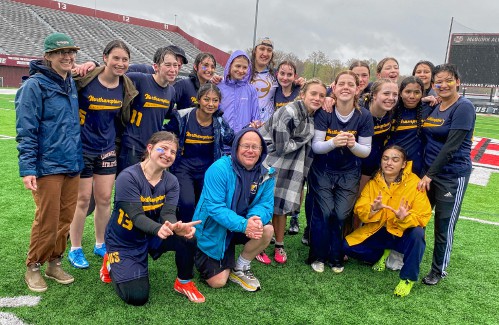 Amherst Invitational: Northampton girls ultimate capture tournament title in impressive fashion
Amherst Invitational: Northampton girls ultimate capture tournament title in impressive fashion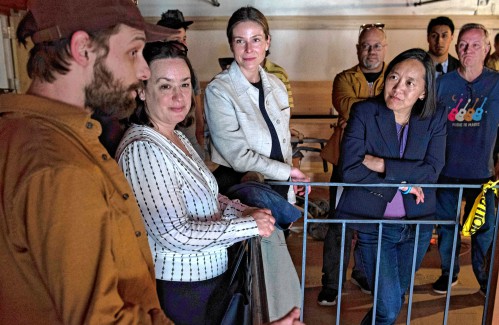 Music key to Northampton’s downtown revival: State’s top economic development leader tours city
Music key to Northampton’s downtown revival: State’s top economic development leader tours city  Locking up carbon for good: Easthampton inventor’s CO2 removal system turns biomass into biochar
Locking up carbon for good: Easthampton inventor’s CO2 removal system turns biomass into biochar Advancing water treatment: UMass startup Elateq Inc. wins state grant to deploy new technology
Advancing water treatment: UMass startup Elateq Inc. wins state grant to deploy new technology New Realtor Association CEO looks to work collaboratively to maximize housing options
New Realtor Association CEO looks to work collaboratively to maximize housing options Let’s Talk Relationships: Breaking up is hard to do: These tools can help it feel easier
Let’s Talk Relationships: Breaking up is hard to do: These tools can help it feel easier The long shadow of the Mill River flood: Multiple events on tap in May to mark 150th anniversary of the 1874 disaster
The long shadow of the Mill River flood: Multiple events on tap in May to mark 150th anniversary of the 1874 disaster 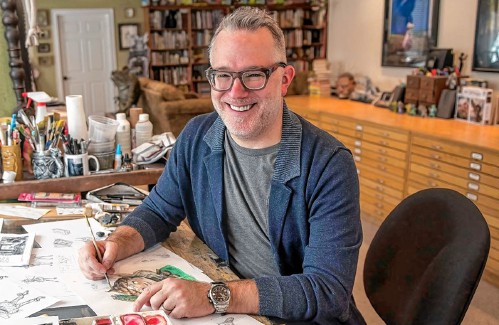 Fantasy favorite revisited: Amherst authors’ popular ‘Spiderwick Chronicles’ gets a new streaming adaptation
Fantasy favorite revisited: Amherst authors’ popular ‘Spiderwick Chronicles’ gets a new streaming adaptation Speaking of Nature: Bird of my dreams, it’s you: Spotting a White-tailed Tropicbird on our cruise in Bermuda
Speaking of Nature: Bird of my dreams, it’s you: Spotting a White-tailed Tropicbird on our cruise in Bermuda
